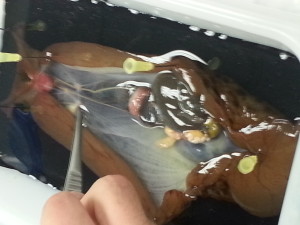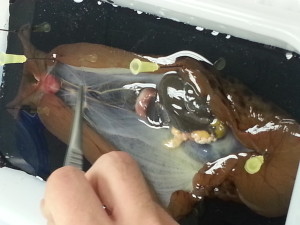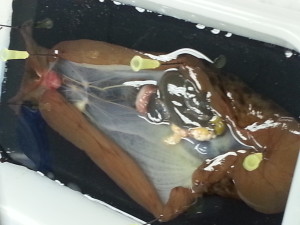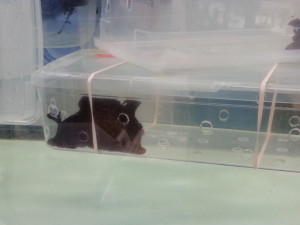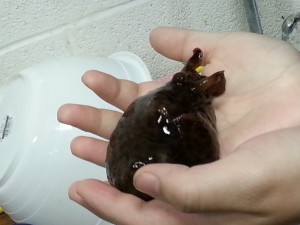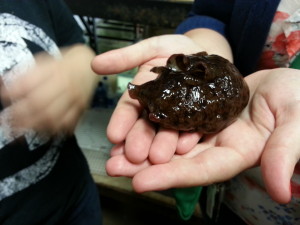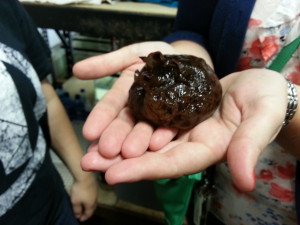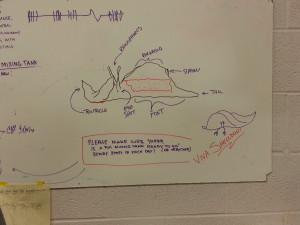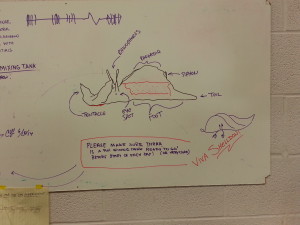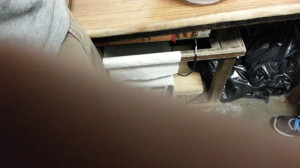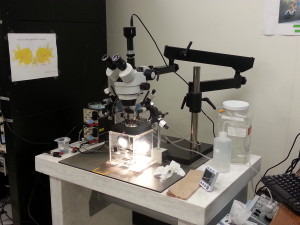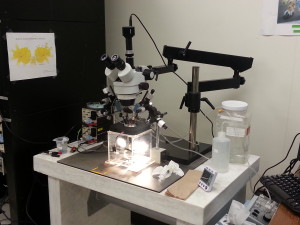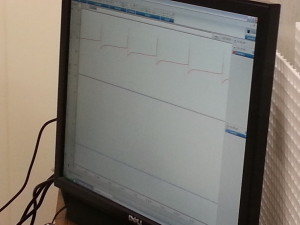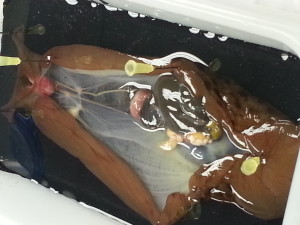A lab assistant from the neruobiology lab took several of the Eteams students (myself included) on a tour of the lab. The specimens being used are called Sea Hares. They look like slugs without an outer shell, however they possess an internal shell. The Sea Hares are kept in tanks of salt water at temperatures near sixty degrees fahrenheit. The room itself is also on a timer so they get twelve hours of light from the inside of the room to simulate sunlight and then twelve hours of darkness to simulate night time. The Sea Hares have a natural defense against predators called inking to which if feeling threatened will release a purple-blue ink.
Who we are: Lab Assistant (tour guide), other Eteams students, Adam Melchor (me)
What we did: We toured the neurobiology lab located behind the center of science. We listened and observed to the research being done, asked questions and had the chance to touch the slugs.
What we learned: The defense mechanism the Sea Hares possess is not used to keep away predators but to lure them in. What I mean is the ink the Sea Hares spray attract predators to the ink allowing the Sea Hares to swim away. Sea Hares are simple organisms with a nervous system of twenty thousand neurons that are easily identifiable. By using simple organisms, it can be easier to map their though processes, instead of using more complex organisms with more neurons. Also the Sea Hares reproduce like rabbits, so there is no shortage of lab specimens. The lab life of these animals is about two years.
Questions we have: We asked if this type of research can one day be the cure for Alzheimer’s or for other mental disorders and the answer is yes. However more research needs to be done. Mapping the Human Genome took thirteen years to accomplish with help from various countries and institutions.
Connections to Teaching: Students wonder how scientists find solutions and this tour shows it. Students will be more motivated to learn when its not just a boring lecture about cells, but using tools like microscopes to let students see the inside of the cell. By making science more hands on, you will engage the students and they won’t think science is boring.
